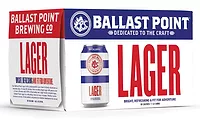2015 Beer Category Report
2015 Beer Report: Craft beer increases market share
Hoppy styles account for nearly 50 percent growth for craft beer in 2014
One segment of the beer category that continues to garner increased attention throughout the industry and pop culture is craft beer. In fact, Jeff Nowicki, chief strategy officer with Bump Williams Consulting (BWC), Stratford, Conn., says craft beer has expanded beyond being just a segment within the beer category for American consumers.
“Craft is more than a beer segment; it is a cultural movement in American society,” he says. “I think if you look at where these small brewers have built their breweries, in many cases it is in the somewhat low-rent urban locations within their respective cities. These locations attract consumer visits and enhance these neighborhoods over a period of time. [In turn,] that brings people in, and, in many cases, ignites redevelopment of these areas in a multitude of ways.”
In 2014, craft beer volume sales increased just more than 17 percent, and dollar sales were up 20.5 percent based on data from Chicago-based Information Resources Inc. (IRI) in U.S. multi-outlets and convenience stores, Nowicki says.
Although the segment remains small, it has made strides in volume sales and market share. Beth Bloom, food and drink analyst for Chicago-based Mintel, says that from 2009 to 2014, craft beer volume sales increased 81 percent. It grew 14 percent in 2014 alone. This also has been evident in volume share across the overall beer market with the segment’s volume share at 4.6 percent in 2009, compared with 8.8 percent in 2014, she says.
Like much of the beverage industry, craft beer also has been impacted by SKU proliferation. According to BWC’s Nowicki, craft brewers saw SKUs increase 6.6 percent in 2014, with more than 3,890 packages in the marketplace. Although the segment has experienced strong SKU proliferation, brand owners still are able to find shelf space within retail channels.
“Local and regional brewers are now being given more consideration for shelf placement as consumers show greater support and interest in these brands,” Nowicki says. “Retailers are providing great focus on local and strong regional players while also expanding single-serve packages within their shelf-set configurations.”
Craft beer also is seeing a slight shift in package type. “As far as pack types, bottles continue to be the bulk of the category; however cans are driving far more than their fair share of growth — 8 percent share versus 28 percent of case volume growth,” says Danelle Kosmal, vice president of the beverage alcohol practice at New York-based Nielsen. “I think we’re going to see this trend continue, as large craft breweries expand distribution with cans to fulfill more drinking occasions. Additionally, we’re seeing a trend of small craft breweries entering the off-premise space with cans instead of bottles because of the cost benefits.”
What continues to drive interest in craft beer are its styles and varieties. Kosmal notes that 2014 was a big year for hoppy styles, particularly IPAs. “Hoppy styles, which primarily are represented by IPAs but also include Pale Ales, contributed to [the] 45 percent of growth within the craft segment last year,” she says. “In 2014, there were over 200 new hoppy brands introduced, including one that has risen to be the fourth-largest brand among IPAs. We’re also beginning to hear more about Session IPAs. While still very small, Session IPAs have seen incredible growth over the last year, up 323 percent in 2014 versus 2013, with 17 new Session IPA brands entering the market.”
BWC’s Nowicki adds that seasonal releases represent the second-largest style purchased, with 16.8 percent dollar share and 9.8 percent volume. Variety purchases is the No. 3 style, with dollar sales accounting for 7.8 percent market share and volume sales representing 9 percent market share. In fact the Top 5 styles — IPA, seasonal, Pale Ale, variety packs and Amber Ale — represent 64 percent of all craft styles sold, he says.
Mintel’s Bloom adds that craft beer products tend to focus on flavor, which appeals to young legal-drinking-age adults like millennials. “Consumers now seem to be shifting over to this interest in flavor, so that definitely helps craft,” she says.
These consumers also report having a sense of pride in trying a lot of different products or working their way through a product line, Bloom explains. “When new products come on the market that are in this category, consumers want to give it a try,” she adds.
Nielsen’s Kosmal echoes this point, citing a Nielsen survey conducted last year that asked consumers what were the primary reasons they purchased craft beer. “Fifty percent said it was to experiment with different styles and flavors; 40 percent said because they like seasonal offerings,” she notes.
However, craft beer still has opportunities in which it can capture a broader audience, Kosmal says. “Within grocery retailers, Hispanics account for 15.1 percent of total beer volume but account for much less — 7.6 percent — of craft beer volume,” she explains. “Craft beer is very underdeveloped among Hispanic consumers, and there is a lot of potential to grow within this space.”
Looking for a reprint of this article?
From high-res PDFs to custom plaques, order your copy today!





